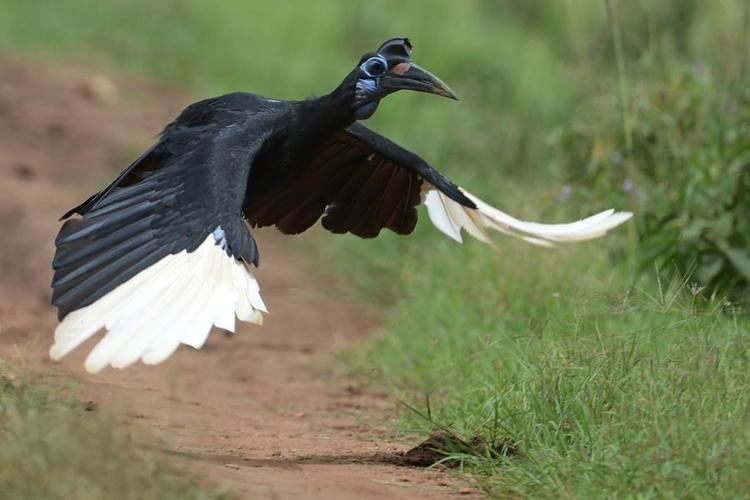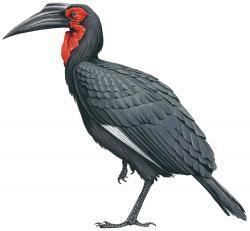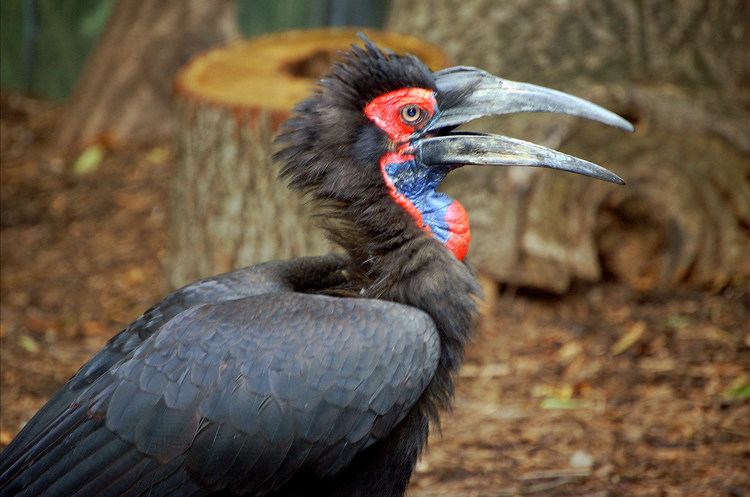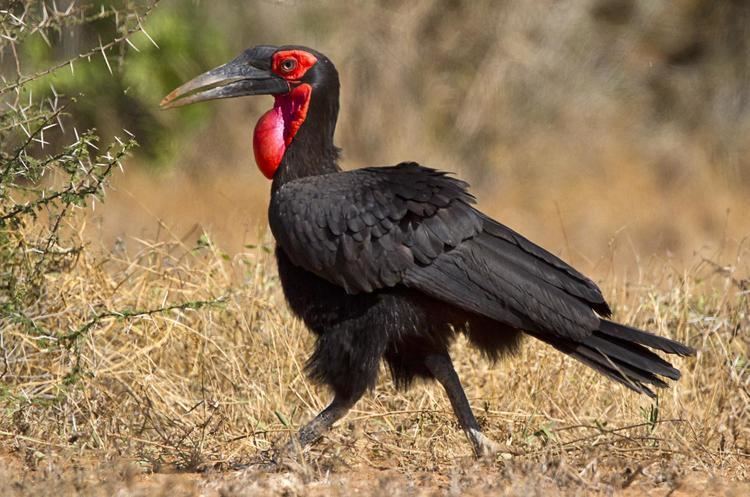Scientific name Bucorvidae Rank Family | Phylum Chordata Genus BucorvusLesson, 1830 Higher classification Bucorvinae | |
 | ||
Lower classifications | ||
How mabula ground project plans to help conserve the southern ground hornbills
The ground hornbills (Bucorvidae) are a family of the order Bucerotiformes, with a single genus Bucorvus and two extant species (though possibly including another genus with six extant species). The family is endemic to Sub-Saharan Africa: the Abyssinian ground hornbill occurs in a belt from Senegal east to Ethiopia, and the southern ground hornbill occurs in Southern and East Africa.
Contents
- How mabula ground project plans to help conserve the southern ground hornbills
- Abyssinian ground hornbills bucorvus abyssinicus
- Taxonomy
- References

Ground hornbills are large, with adults around a metre tall. Both species are ground-dwelling, unlike other hornbills, and feed on insects, snakes, other birds, amphibians and even tortoises. They are among the longest-lived of all birds, and the larger southern species is possibly the slowest-breeding (triennially) and longest-lived of all birds.

Abyssinian ground hornbills bucorvus abyssinicus
Taxonomy

Ornithologists consider the hornbills a distinct order Bucerotiformes and usually raise the ground hornbills to family level (Bucorvidae) on account of their distinctness. The genus Bucorvus contains two extant species:

A prehistoric ground hornbill, Bucorvus brailloni, has been described from fossil bones in Morocco, suggesting that prior to Quaternary glaciations the genus was either much more widespread or differently distributed.
It is currently thought that the ground hornbills, along with Tockus and Tropicranus, are almost exclusively carnivorous and lack the gular pouch that allows other, less closely related hornbill genera to store fruit.
Recent genetic data shows that ground hornbills form a clade with Bycanistes, this clade being a sister taxon to the rest of the hornbill lineage. Bucorvidae are thought to represent an early African lineage, while the rest of Bucerotiformes evolved in Asia.
